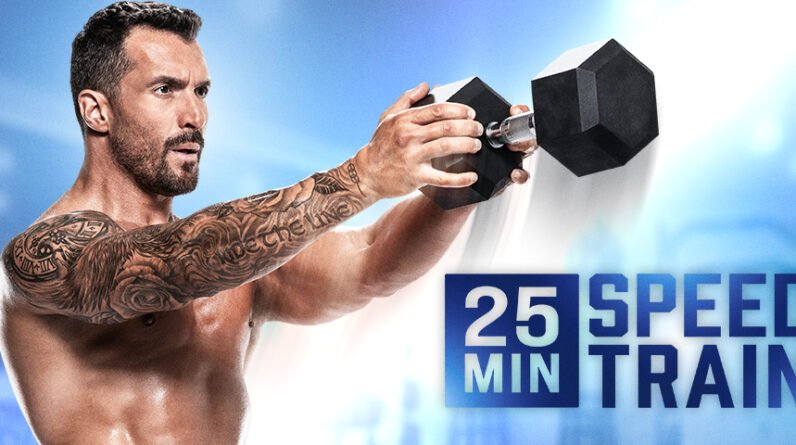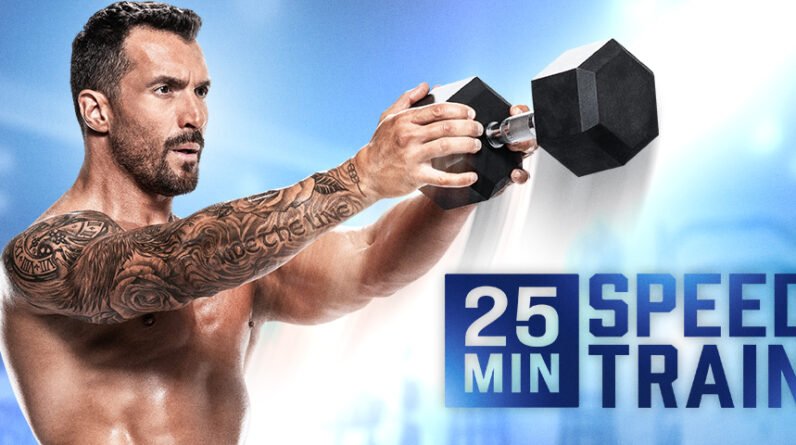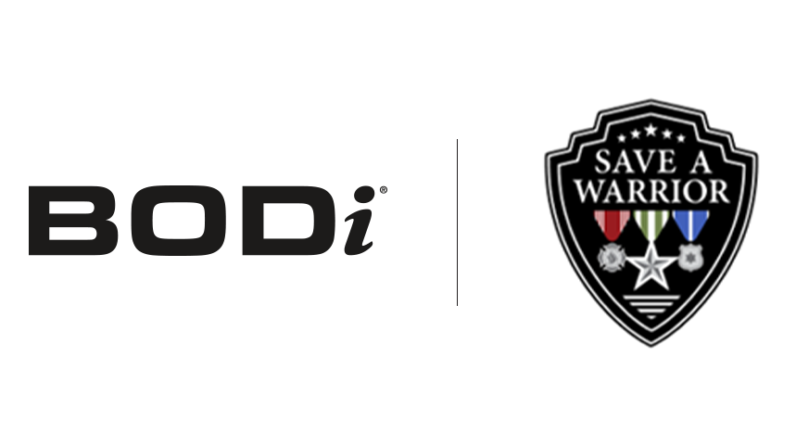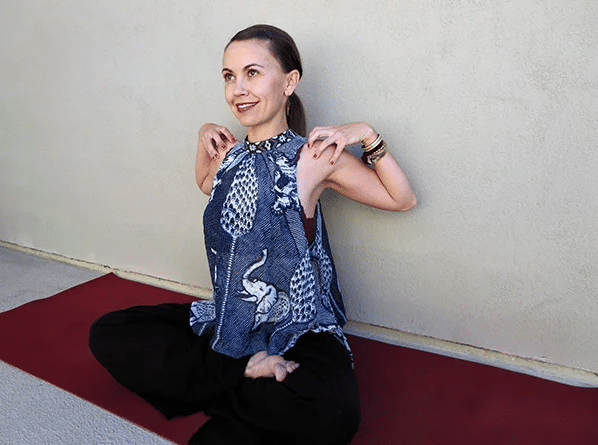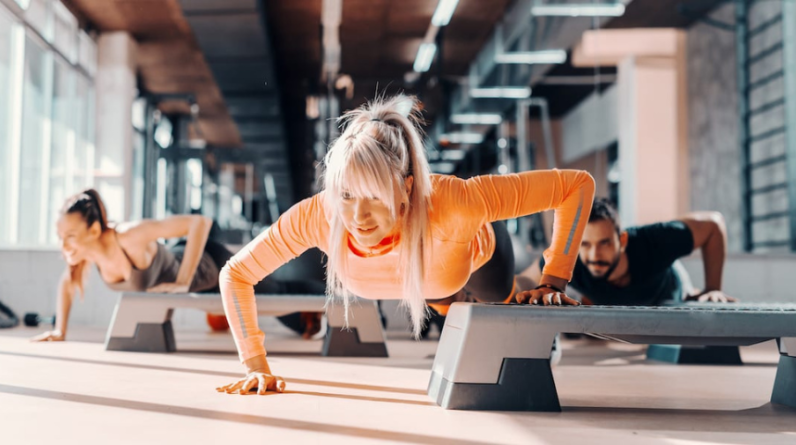
If you want to hit loads of muscles in a single rep, you can’t do much better than a standard push-up. But the base move is just the beginning. To see new gains in strength, muscular development, and mobility, there are dozens of push-up variations to try.
Push-ups come in many different forms, making it simple to advance (or dial back) the classic exercise as needed. Various hand positions, body angles, props, and add-on moves work and emphasize different muscles, keeping the move fresh and effective.
Try for yourself with the following push-up variations.
Muscles targeted: Chest, shoulders, triceps, and core
- Assume a high-plank position with your feet together, your body straight from head to heels, and your hands in line with (but slightly wider than) your shoulders. Engage both your glutes and your core to lock your body into position.
- Keeping your elbows tucked toward your body (your body should form an arrow when viewed overhead) and your head neutral, lower your torso until your chest is within a few inches of the floor.
- Pause, and then push yourself back up to the starting position as quickly as possible.
Muscles targeted: Along with the triceps and shoulders, this easier expression of the move shifts emphasis to the lower chest
- Place your hands slightly wider than shoulder-width apart on a bench or other stable, elevated surface, and assume a push-up position.
- Keeping your back flat and core engaged, lower your chest to within a few inches of the bench.
- Pause, and then push yourself back up to the starting position.
Muscles targeted: This more challenging push-up hits the usual muscles, with added emphasis on the triceps
- Assume a low-plank position with your forearms, palms, and balls of your feet on the floor, and your body straight from head to heels. Your feet should be shoulder width, your fingers spread wide, and your forearms parallel.
- Without shrugging your shoulders toward your ears, or letting your hips sag or lift, shift your weight onto your left forearm and place your right palm flat on the floor below your right shoulder.
- Still maintaining a perfectly straight body, shift your weight onto your right palm, placing your left hand flat, and straightening both arms to assume a high-plank position.
- Reverse the move, lowering your right forearm and then your left forearm back to low-plank position, keeping your body straight the whole time.
- Repeat the movement, this time placing your left hand in push-up position before your right hand. After both hands are in high-plank position, lower your left arm to low-plank position before your right arm.
- Continue the movement, alternating the initiating arm with each rep.
4. Diamond Push-Up
Muscles targeted: The closer hand positioning demands more of the triceps in this more advanced push-up with still plenty of tension on the chest and shoulders
- From a push-up position, bring the tips of your thumbs and index fingers together so they’re touching (see the diamond?). This is the starting position.
- Keeping your elbows tucked (don’t let them flare), lower your torso until your chest lightly touches the backs of your hands. (Or as far as you can go without compromising form.)
- Pause, and then push yourself back up to the starting position.
5. Single-Leg Push-Up
Muscles targeted: The lifted leg challenges core stability in addition to the chest, shoulders, and triceps
- Assume a push-up position, lifting your right leg off the floor.
- Keeping your elbows tucked toward your body, lower your torso until your chest is within a few inches of the floor.
- Pause, and then push yourself back up to the starting position as quickly as possible.
- Complete all reps on one side, then repeat on the other, performing equal reps on both.
Muscles targeted: Walking your hands forward places additional tension on the abdominal muscles and spinal erectors as you stabilize your spine, subsequently working your triceps, chest, and shoulders
- Stand tall with your feet hip-width apart and your arms at your sides.
- Keeping your core engaged and back flat, hinge forward at your hips and place both palms on the floor. Bend your knees slightly if necessary.
- Walk your hands forward until you assume a high-plank position. Your wrists should be directly under your shoulders and your body should be straight from head to heels.
- Lower your body, bringing your chest within a few inches of the floor, and then return to high-plank.
- Reverse the movement, walking your hands back toward your feet, to return to the starting position.
7. Wide-Arm Push-Up
Muscles targeted: Moving your hands out farther to the sides shifts emphasis to the muscles of the chest
- Assume a push-up position, placing your hands on the floor twice shoulder-width apart.
- Keeping your elbows tucked toward your body, lower your torso until your chest is within a few inches of the floor.
- Pause, and then push yourself back up to the starting position as quickly as possible.
Muscles targeted: Shifting to one arm at the top of the push-up places greater tension on the shoulder and triceps of the planted hand, and challenges core stability — particularly the obliques — with the rotational movement
- Assume a push-up position.
- Keeping your elbows tucked (not flared), core engaged, and head in line with your spine, lower your body until your chest is within a few inches of the floor.
- Pause, and then push back up to the starting position.
- Once you return to the starting position, shift your weight onto your left hand, stack your right foot on top of the left, roll your right hip back, and extend your right arm toward the ceiling (the only parts of your body on the floor will be your left hand and the outside edge of your left foot). Keep your body straight throughout the movement.
- Bring your right hand and foot back down to the floor, and repeat the sequence, switching sides on the next side plank. Continue alternating sides on each rep.
Muscles targeted: Elevating your feet shift more weight onto your hands, increasing work on all of the conventional muscles engaged in a push-up
- Assume a push-up position with your hands on the floor and your feet elevated on a sturdy bench or box.
- Keeping your body straight and core engaged, slowly lower your chest as close to the floor as possible.
- Return to the starting position.
Muscles targeted: Adding a “jump” with your hands helps build explosive power in the chest, shoulders, and triceps
- Assume a push-up position.
- Keeping your elbows tucked, lower your torso until your chest is within a few inches of the floor, and then push up with enough force for your hands to leave the ground.
- Land softly, transitioning immediately into your next rep.
11. Staggered Push-Up
Muscles targeted: Offsetting hand positions places greater weight on one arm, challenging stability and promoting functional strength
- Start in a standard push-up position, and then move your right hand slightly forward and your left hand slightly backward.
- Do two push-ups.
- Switch hand positions and repeat.
- Continue alternating hand positions every two reps.
12. Spider-Man Push-Up
Muscles targeted: Bringing your knee to your elbow at the bottom of the move increases time under tension for the customary push-up muscles, while introducing challenges to hip mobility and the glutes
- Assume a push-up position.
- Keeping your hips level, bring your right knee as close as possible to your right elbow. Pause, and then step back to the plank position.
- Lower your body, bringing your chest within a few inches of the floor, and then return to the starting position.
- Bring your left knee as close as possible to your left elbow. Pause, and then step back to the plank position.
- Perform another push-up and repeat the sequence, performing equal reps on each side.
13. Mountain Climber Push-Up
Muscles targeted: Pumping your feet further emphasizes your core, requiring more than isometric engagement from your abdominal muscles
- Assume a push-up position.
- Lift your right foot off the floor and draw your right knee toward your chest, making sure to keep your back flat, your butt down, and the rest of your body stationary.
- Return your right foot to the starting position, and immediately repeat with the left leg.
- Lower your body until your chest is a few inches from the floor, and then return to the starting position.
14. Modified Planche Push-Up
Muscles targeted: Positioning your hands farther back targets the shoulders while still working the chest and triceps
- Lie face down on the floor, placing your hands on the ground beside your ribs.
- Engaging your core and glutes to ensure your body remains straight, keep your elbows tucked toward your body and push yourself up to high plank. This is the starting position.
- Lower your body until your chest is within a few inches of the floor, and then push yourself back up to the starting position.
Muscles targeted: Adding a jump at the top of the move turns a push-up into a full-body exercise and introduces a hellacious dose of cardio
- Stand tall with your feet hip-width apart and your arms at your sides.
- Bend your knees, hinge at your hips, and squat down, placing both palms on the floor.
- Jump your feet back to a push-up position.
- Lower your torso until your chest is a few inches from the floor, and then quickly push back up.
- Jump your feet back to your hands, and then explode upward, jumping into the air.
- Land softly and immediately begin your next rep.
16. Stability Ball Decline Push-Up
Muscles targeted: This version of the decline really challenges your core as you work to stabilize yourself on the ball
- Assume a push-up position with your toes on top of a stability ball. Brace your core and squeeze your glutes to keep your body in one straight line from head to toes for the entire move.
- Lower your chest toward the ground, keeping your elbows tucked close to your body. They should form a 45 degree angle to your torso when viewed from above.
- Push yourself back up to the starting position.
Muscles targeted: Performing the move on an unstable med ball promotes balance across both sides of your body
- Assume a push-up position with your hands elevated on a medicine ball. Place the medicine ball directly underneath your chest with your hands on either side of it.
- As this push-up variation can be tough on the wrists, place your hands in external rotation on the medicine ball — point your thumbs toward your head and your draw your fingers out to the sides (away from the heels of your hands).
- Position your feet wide for balance. Engage your core and squeeze your glutes to keep your body straight.
- Bend your arms and lower your torso toward the medicine ball. Keep your head down and your elbows close to your sides.
- Pause once your chest is within a few inches of the medicine ball. Then, push yourself back up to the starting position.
What Muscles Do Push-Ups Work?
As touched upon above, these are the primary muscles you’ll engage to some extent during any push-up.
Chest
Your pectoral muscles (also known as your “pecs“) work to draw your upper arms toward your body. You’ll feel them during the raising and lowering portions of the push-up.
Shoulders
The deltoid muscles assist your pecs in bringing your arms toward your body during the lowering portion of the push-up, and pushing the floor away during the raising portion.
Triceps
Your horseshoe-shaped triceps muscles — located on the backs of your upper arms — work in partnership with your shoulders and chest to lower and raise your body in the push-up.
Core
When done right, the push-up will engage your rectus abdominis (a.k.a. the six-pack muscle), as well as the transverse abdominis, which is the deep core muscle that lies beneath it. Together, these core muscles work to keep your trunk stable throughout the movement.


